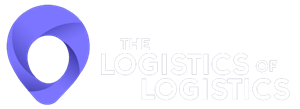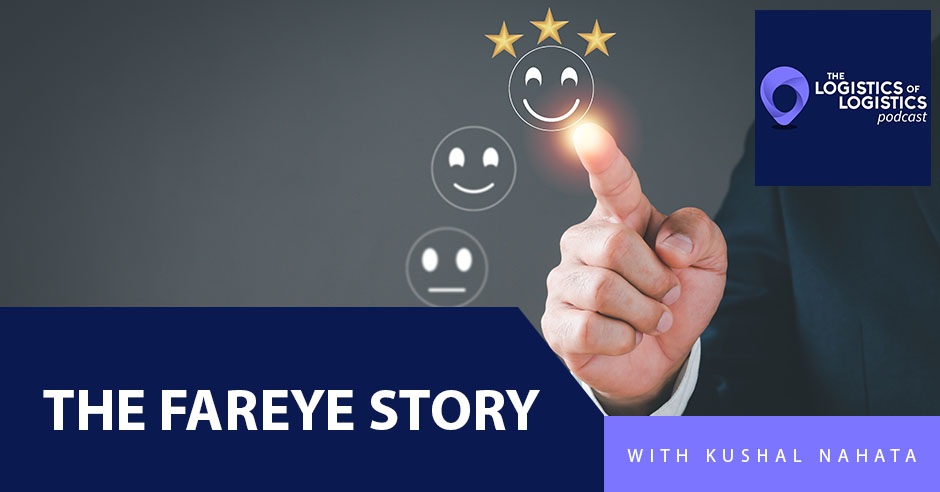Every single business should be able to democratize an excellent delivery experience and provide it to their customers. Joe Lynch sits with Kushal Nahata, the Co-founder and CEO at FarEye. Kushal talks with Joe about how FarEye is a delivery management platform that helps businesses get the product at a lower cost and more sustainable fashion. It’s crucial to nail a great delivery experience to build customer loyalty. The right way is to partner with more service providers and fundamentally own the delivery experience because the customer is yours. Do you want to learn more about logistics? If yes, then this episode’s for you.
—
The section below is transcribed. Transcription has limitations so there may be grammar and typo issues.
The FarEye Story With Kushal Nahata
Our topic is the FarEye story with my friend, Kushal Nahata. How is it going?
It is going great. Thanks, Joe. It is my pleasure to be here.
I told you before my executive coach came up with it, and I did not like it, but I used it as a placeholder name. I was like, “It is okay, but it is not a good name.” Everybody mentioned it, “That is a great name.” Finally, it went through my thick skull. Ann was right. The best Executive Coach out there is Ann Holm, and she picked it. Thank you, Ann.
Maybe you want to look at the other things that you don’t like.
I started The Logistics of Logistics as a blog. When we talked about this a little bit offline, there are all these silos in our business. There are few people who get a chance to work across all of them. You might be an expert at over the road and say, “I don’t understand blank.” A friend of mine was sending me text messages saying, “Who can explain EDI to me well?” I was like, “Let me think about that.” There is somebody clearly, and that guy might say, “I don’t know about blank and blank.” This is the nature of our industry. It is big. It is a catchall for a whole bunch of different industries. Kushal, please introduce yourself, your company, and where you are calling from.
I’m the Cofounder and CEO of FarEye. I’m dialing in from our quarters in Chicago. We originally started in India, and we set up our global headquarters in the US, in Chicago. If you look at anything, which is a physical product, something that you can see, touch, and feel, it can now be ordered online and delivered at home. The complexity that stays behind this. The logistics of getting products at home are complicated.
You are dealing with customers who need foster, who have anxiety, and who are price-driven, who do not want to pay for the logistics. This is the problem which we got fascinated with. It is complex. It touches each one of us every single day if not more. We thought, “Why not build a technology platform which can empower businesses, brands, and logistic services providers to get products delivered to customers home in an efficient manner, more sustainable, and customer-centric. Somewhere or the other, we are a delivery management platform that helps brands and businesses to get the product at our home when we need it at a lower cost and in a more sustainable fashion.
I noticed the name of the company is FarEye. How did you guys come up with the name FarEye, speaking of business names?
We have a similar story. Some of the things that we don’t like, sometimes it becomes the right thing to do. I started directly out of my college. We were more fascinated with the problem. One of the team members came up with this name, FarEye. It is not that exciting. Plus, we thought it was two words. We probably wanted one word at all.
He explained the concept of it. You want to see what’s not visible or what is far from you. That connects with the problem you are trying to solve because the biggest problem in logistics is you can’t find it. You don’t know what is happening on the ground. The fact of the matter is when the shipments are on the road. There are many variables out there such as weather, traffic, vehicle, driver and customer.
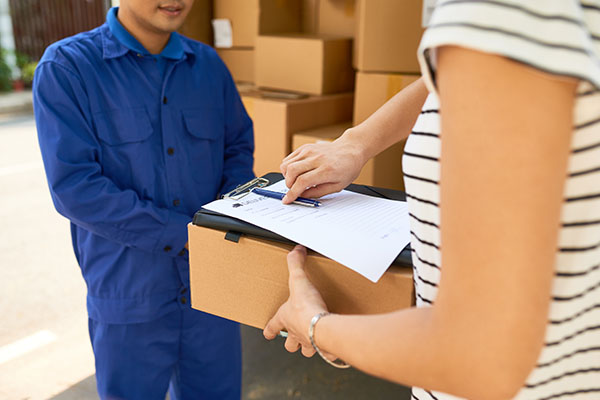
FarEye: We are a delivery management platform that helps businesses to get the product at a lower cost and more sustainable fashion.
The biggest bottleneck is not knowing it. Those are the 3 to 4 capabilities that are cool for us, which combine with the name of FarEye. Helping brands with orchestration, real-time visibility, customer experience, and optimization. It did come with what we were doing. It was someone on my team who gave it, and I didn’t like it. I said, “Think of something else.” Everyone else said, “This is such a nice name. Why don’t you go ahead with that?”
Initially, when we had the ability to find a shipment, I heard somebody say, “The number one question in our business is, ‘Where is my stuff?’” Somebody pointed out the second one was, “Where is my money?” We will talk about the first one. Visibility is important but once you get that data, all of a sudden, you go, “All this data about visibility is important.”
When you start saying, “I can predict this.” You start having all the data, bringing AI and some other tools against it. The visibility, which was important in the beginning, is still important but you start looking, and it gets more valuable the more we collective it. It is almost like a progression we are seeing. The FarEye is not for seeing where my stuff is. It is saying, “How is my business running? How can I predict better and do a better job?”
There is this one saying that we have internally, and I believe it completely. I think about several years ago. It was a movement that every company needed to be a technology company. Where we are, I feel every product company specifically for our company needs to be a logistics company. I completely relate with you that it is not knowing where the shipment is. It is commerce.
Logistics is no more operations only or a cost factor. It is a revenue factor now. Delivery experience drives customer retention, and it is driving reference and many studies and numbers about it. How much does one good experience cost versus one bad? It is tremendous. It is lesser about what you deliver. It is important but the good thing is how you deliver.
We jumped right into it here. I wanted to ask you a little bit about yourself. You grew up in India, right?
Correct.
Tell us a little bit about your upbringing, and when did you move here?
I moved to the US in December 2021 right in Chicago. That is the best thing because looking at the weather, it gets better from there. It doesn’t get worse.
You’ve got to move to Chicago in fall and you go, “This is the perfect place.” I’m in Detroit about 4 and a half to 5 hours away, depending on the traffic. My kids always say, “We are going to move to Chicago when we get older because we would go there quite a bit.” They have been there hundreds of times. I said, “I love Chicago but it is not any warmer than here in the wintertime.” Where did you grow up in India, and where did you study?
Delivery experience drives customer retention.
I grew up and started in New Delhi. That is the capital. I stayed with my parents. We are middle class, lower middle class, something clear that you were built for yourself. For my teacher specifically, it was clear that they would know me, like me or hate me. I was one of the students who will go into the class, and I will come with my questions. I want to know more about these things. Sometimes some of them like it, and sometimes some of them don’t. That is how typically schooling has been.
Almost rare that she has to wake me for school. School typically started at 7:30 AM for us. I hear from my mom, “You will get up at 5:00 AM, and you will knock on the door. ‘I want to go to school. Let’s get food ready. Let’s get breakfast.’” She is still two and a half hours away. She was like, “Can you please go to bed?” I will come back again in ten minutes like, “I think time is already done. Can you get ready now?”
You sound like a different kid because most kids, you have to practically beat them to get out of bed and go to school. It sounds like you are a curious kid and pretty brave to be upsetting the teacher. We teach kids, and I was this way, usually, until I was a teenager. You go to school, you are obedient, you do what you are told, and you want to make the teacher happy. We developed that way and you go, “I want to get out of school and get a good job. I want to make my boss happy.”
At some point, you are like, “This isn’t the way the world gets better by wandering around being agreeable and making the boss happy.” You need some curiosity. You need to say, “There is a better way.” It sounds like you had enough of that to start your company. You said to me before we hit record that you started this company right out of college.
When I went to college, that is where I met Gautam and Gaurav, who are my partners here. It is similar at college. We went there and I thought we are done with books. We are done with pure exams. You’ve got to do more of practical, but it continued the same. That is where I developed my interest in robotics. Robotics, especially, played a big role in the entrepreneurship journey because you are going to make something. There will be competitions at the state, national and international levels. We have participated and won. Suddenly, you can apply technology and solve problems, and it is such a good thing. You start thinking around that. You do not have any curriculum or books on what you want to build.
I slowly start thinking, “What is the problem?” People also start looking, so they will come at more problems to you. It started developing in that way. I did my engineering scenario. We call post-school Engineering after that, which is a Bachelor’s. I started in Electronics, and my other cofounder did it in Computer Science. In the final year of college, we know fairly well to try out using our skills to solve problems. That was the only thing that we wanted to do is get offered in multiple companies and thought this world is always open. You can go back but maybe let’s try solving problems.
When did you start the company? What year?
2013 is when I started FarEye. Before these for a few years, we were training students into robotics. We went across almost 10,000 to 15,000 students, where we taught how to build robots. It is fascinating because when you build some machine yourself, and you see it moving on the ground, it is such a great feeling.
Was that a business or was that a charity? How was that organized, the training of robotics?
We ran that as a business. It wasn’t a nonprofit thing but we were bootstrapping. That is how we built some capital. We had one of these journalists who spent some time with us. The next thing we know, there was an article we read in the newspaper which says, “Three guys trying to solve the problems of common men and women.” These transporters came in and said, “We’ve got vehicles moving. The cost is high. We can’t track and optimize it.” We were like, “Let us try solving it.”

FarEye: In the final year of college, we know fairly well to try out using our skills to solve problems.
We started fundamentally spending some time with them. I started going to events in conferences because I didn’t work anywhere. I didn’t know the core of the logistics industry or any other industries. I used to spend time with the founders and CEOs of those companies, and try to learn from them, “What are the top problems they are trying to solve? How is their business changing?” What was clear is that eCommerce is coming a big thing. The customer experience will drive business and revenue forward. It is highly dependent on logistics and delivery experience.
The first customer that we signed up with was a large eCommerce company in India. My cofounder and I spent a lot of time in their warehouse and hub, went out for deliveries with a driver, and understood exactly day-to-day operations. That helped us build a good product because we knew what is in a day in a life for a driver or dispatcher. What is the customer’s expectation when you go out and deliver? Let’s say I come out and deliver to you. I’m trying to upload it in my app. It is not happening, and you do not care about it. You are like, “I have got my product. Can you go from here?”
I’m in the US. I know eCommerce is a big thing here. Is eCommerce caught on in India to the same extent?
It was a lot bigger. Some of these developing markets are actually fraud, and they miss a stage. A lot of Indians never went to computers and laptops. They directly moved to mobile and smartphones. For them, it was directly, “Let’s start the eCommerce thing.” For example, instead of the entire backing thing, a lot of them moved directly to wallets. The eCommerce is extremely big.
It’s a huge market too. How many people are in New Delhi?
India’s population itself is about 1.35 billion. New Delhi is a lot more than a few states together in the US. It is extremely complex and price-sensitive. People don’t want to pay for deliveries that would generally be free or at a very subsidized cost. People do not want to pay for delivery. Returns are free, and returns are also picked from your homes. You don’t need to go out and drop somewhere.
The further complexity is, here in the States, we still deliver the products outside the home, but in India, every product is handed over to you as the customer. You need to be there. Otherwise, it is a repeat attempt or a failed delivery, and it has such thin margins. That taught us a lot about building a platform which is scalable, solving for the most complex market in the world, and is completely not standardized.
Every company has its own operations and its own process. My cofounder and I were like, “This way, we cannot scale. What do we do?” I call it sometimes advantages of disadvantages. We started in a market that was extremely price-sensitive, super complex, and completely unorganized/nonstandardized. We had to eventually build our own programming language or what we call BPM, which helps you set your processes with a few clicks.
I don’t need to change the product for your operation processes. You can automate them, you can build excellence, and you can continue innovating every month or every quarter. You learn, “This is a better way of doing pickups. It can reduce our cost.” You just change the process. When we scale ourselves outside India, Europe and the US, people love that workflow BPM tool, and the flexibility and ability to digitize their manual processes along with getting into invisibility. We never built it as a USB. We built it because we wanted to scale, and we wanted our customers to be able to use the tool.
You mentioned the advantage of disadvantages. The Japanese automakers had a small market, and they were on a little island with no natural resources. It is difficult to build the vehicles for their market, but they’ve got good at Lean. That was also part of their culture. They lived in a small place, smaller relative to here. You contrast that with the US automakers at the time with huge country, lots of natural resources, and been doing it the same way for a long time. Nobody else competes. All of a sudden, when the Japanese got there, it was like they were from a different planet in terms of quality and processes. It took a while for the US and European automakers to catch up.
Every single business should be able to democratize an excellent delivery experience and provide it to their customers.
What is weird is when Korea and China started getting involved, they started that way. That is the advantage. You also mentioned leapfrogging. I haven’t paid attention to this but when I used to go to China, nobody had mobile phones. It took eight months to get a landline from the government. As soon as mobile phones hit, everyone was like, “Forget it. I’m not waiting eight months to get a landline. I’m going to get a mobile.” They pushed right past it. The progression would be to get a landline and switch over to mobile. A lot of people never had a landline.
Specifically in digital and eCommerce, the transformations we have seen, a lot of times, it is about you are on landscape 1, and you are moving to landscape 2. There is a timeframe needed for it. There is change management. Some users switch and some don’t. In India, when demonetization was done, a lot of people didn’t have bank accounts in rural India. They directly moved to wallets.
I hear from many folks here who travel to India and US, they were like, “Every single place, there is a QR code, and you can scan and pay.” You have never seen wallets so much anywhere else in the world. China is the other example. That helped us build it. I will give you an example. One of our customers was a large pizza chain. They used, “We promise that we deliver in 30 minutes or else the pizza is free.” At the school of engineering, I love that brand because sometimes I can get that pizza for free, but I never knew later in my life that I would be partnering with them and solving problems for them.
We went there and met them. I was fascinated with the way they had built optimizations and control in operations. For us to be able to create value for them, their technology needs to be ten times ahead. That helped us build a robust and flexible platform. A lot of our customers use us because they can work with FarEye across different markets. Each market has its own nuances. You can customize it and have your own processes for individual markets.
Speaking of using disadvantages to your advantage. Domino’s started in Ann Arbor, but they didn’t have a big restaurant. They were having a problem getting people in, so they decided, “Let’s start delivering pizzas.” They were close to saying, “We are only going to sell one kind of pizza.” Tom Monaghan said this many times, “I almost got to the place many times in my business where I said, you can have a pizza. It is going to be pepperoni and cheese, nothing else.” No other choices and maybe a cheese pizza because the customization takes time, and it takes away from the speed. Let’s switch gears a little bit. You started this business in India. Were you successful there? What was the second country you moved to?
We started up in India, and the way I looked at it is, “Let’s get the best brands to sign up for the platform and to get value.” That is how you start getting a lot more trust in what your platform can do. For companies that had tens of thousands of drivers, we partnered with them. We get their operation scalable and predictive, and reach a stage where brands can offer predictive time slots before the order is purchased.
If you go online, you can select a time slot. That is dynamic, not static. That is considering optimization and lesser vehicles. A lot of these users moved across companies. From India, they moved to Southeast Asia and moved to the Middle East. These users reached back and said, “We moved to this company. The operations are similar. Why don’t you work with us?” I did not even have a passport when I started FarEye. I was like, “India is a large market. We will work here. We will grow here.”
I went to my investors and said, “We have got some opportunities outside. I don’t know where should we focus.” It was like, “If the problems are the same in the industry you are specific with, the market is global, then maybe you should explore.” We went to Dubai, Singapore, the Middle East, and Southeast Asia. We work with the eCommerce, logistics, and retailer brands, furniture, and big and bulky there.
The first stage was scaling in Asia for the next couple of years. We raised a couple of rounds. Then we started with Europe and US. That was started with our same customers itself. They said, “You are solving problems for here. Why don’t you solve us for the other regions?” The first time I came to the US, in Chicago itself, we met the same customer. They showed us their operation. We partnered with them. The users love the platform.
They were already using something, and they saw that we are 5X to 10X ahead of what they have. They switched to FarEye. They started using it, which was such a great feeling. For us, it was more of a natural progression with our customers, scaling in different markets, giving us an opportunity, devalidating that, working in steps, going into some more customers, building a local team, and growing ourselves. In 2021, we raised $100 million from TCV and Dragoneer. They are both US investors. That is where we get a lot more capital.

FarEye: You can automate your process, build excellence, and continue innovating every month or quarter.
We see that the problem is huge and global because customers want deliveries, which are efficient, and low cost. Slowly, it is getting more sustainable. I wanted to democratize the delivery experience. It cannot be limited to 1 or 2 companies. Every single business should be able to democratize a great delivery experience and provide it to their customers. That is the vision and dream we started with.
I built up a team here in the US several years ago, but I moved a few months back as I received the visa. We almost operate in all global markets. Most of our customers partner with us across multiple markets. They generally start small with 1 geography and 1 business unit. They see the value of the platform. They like the team, and then they slowly grow from there across different markets.
How many countries are you in?
The customer base is almost in 50 countries now.
I always think, as you were talking about expanding, that it would be helpful as you expand to, especially Southeast Asia, Dubai and places like that, especially maybe the US also. There are many overseas Indians who are in business and technology. It is almost like you have an entrée. You mentioned you have an Engineering degree. I tease some of my friends here who are Indian. I said, “Are your parents upset that you have an Engineering degree and not a doctor too?” They said, “They want both.”
In India, several years ago, IT services companies built that foundation. Now suddenly, you have many folks who are talented. You can scale your teams well. Folks have worked in IT, not now but last several years. They understand the process, the quality and the tools, but most of the places now what we see, there have been many movements and which is for the good that you have almost all types of folks across every single company.
A lot of these companies have offices also in India. Indians have moved across. The other Asians and Europeans as well. It is a culture where you have people across, and that is what we have built at FarEye as well. We have a large local team in America. We’ve built a great team in Europe. We have a few folks from India moving here. A few folks from here move there because culture is the core bond. We need to continuously learn and grow there.
I had lots of friends who I worked with who were originally from India and who may move back to India. Some of them moved back and forth because they said, “There is so much opportunity happening in developing markets.” Let’s talk a little bit more about what FarEye is. You mentioned it is a technology platform. By the way, this comes up on my show every once in a while.
In the olden days, we had software but it wasn’t customer-facing. It was always something we used for our back office, for our HR, and our own. We would send emails or have our own systems, but it didn’t have to be intuitive, attractive or something a customer ever saw. With a platform like this, your customers are using your software. It has to have that same look and feel as Amazon, Zillow or DoorDash, it has to feel that good, or they aren’t going to use it. Am I correct?
That is correct. If you look at the eCommerce or the retail world, it seems dramatically in the last ticket, specifically during COVID, post-COVID or the present era, whatever we call it. It is still a work in progress, COVID. Hopefully, it is all history now. You have consumers which are online and offline or both. Most of us are hybrid/omnichannel, the way we call it. For brands that are growing, the need to be present across, it can’t be either or a thing is what we feel. That is where their experience.
A great delivery experience builds customer loyalty.
You used to go to a store. They have invested so much in that store of where the product needs to be placed and who will speak with you about the training, but what happens in an online world? You come to the website, and you place the product. The loyalty, which used to be developed by going into the store again, is somewhere getting lost. That is why most of our customers we speak with were like, “We want to provide this great delivery experience to build customer loyalty.”
If you are competing with Amazon, you have no choice. They have raised that bar. The expectation for the same-day next day is there now. We are seeing a fundamental change where the inventory is moving closer to consumers, and I don’t think we need the same day next day for everything. We will get better at that figuring out what needs to be delivered overnight and what has to be maybe bundled for the next week. We are going to have to train consumers on that, and we are going to have to figure out returns at some point because there are too many returns that are happening.
It is moved to a double-digit if you look at the total penetration of the retail. The eCommerce online would be 30% to 40% of total retail, depending upon. I’m taking averaging across verticals, out of which almost 1/3 has returned. We are talking about 10% to 12% of total goods getting done.
This is the reality. We wanted to make it really simple. We wanted people to accept it. If I was to sell something to Kushal and you say, “I want to buy a pair of shoes.” You order them in sizes 9, 10, and 11. You try them and go, “I’m still a ten.” You send 11 and 9 back. You don’t think anything of it because it is free. We have to do better.
I still say that the brands have to do better with sizing. I bought some shoes that didn’t fit, and I had three different sizes. I ultimately didn’t buy from them. I returned three pairs. You could have sized my foot. It is not that hard. You have this technology platform. What about you don’t have carriers work for you? Do you have networks? How do you engage with the networks? You don’t develop those, do you?
We are more of a technology and SaaS platform, but we have a large carrier network, which is part of the platform. Plus, we are integrating continuously with new service providers. We have seen multiple shifts happening in the market. One, more brands are trying to offer multiple delivery options to consumers because some want now, some want the same day, the next day or a specific slot.
I don’t think as a business, you have an option that, “I will do this and not do this,” because eventually, your customers are across. One is the ability to offer multiple delivery options to your consumers, and you need to educate them on sustainability and being more efficient, but sometimes you need some products at that specific timeframe itself, and they want to win that.
The second is that we are seeing the other shift as companies are measuring their eCommerce in online businesses, they start with a hybrid delivery fleet. Some parts of the world or some regions have their own, and there is a large part where they work with third-party, but here is the constraint. They want to offer the same delivery experience, irrespective of its own or third-party fleet.
They have started partnering with smaller and more local service providers, which wasn’t the case. There were few that were used to working with large ones but now there are multiple options that exist. There are a few hundred and thousands of service providers in the United States of America. Rebuilding that network and look at the power, if you can, as a brand to work with any and every single service provider which has the operations across the states of America.
It helps you with cost and get more coverage. There is an orchestration engine that does this decision-making intelligently. It looks at customer options. It looks at the driver’s and the operator’s capacity. It also looks at performance, and it ties together to make the best decision for that specific order to be delivered to you, to your home, to your office, or your business.
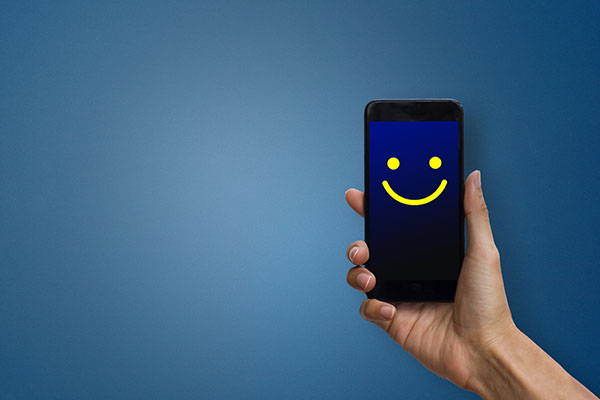
FarEye: Customers want to offer the same delivery experience, irrespective of their own or third-party fleet.
It is not one-sided. It is a three-dimensional problem. One is about capacity because the capacities are reducing. No one now wants to become a driver. We have a wave of autonomous vehicles but still, it is a journey. On the other side, you have complexity from the delivery options. On the third side, you have a customer, which is getting a good experience on some platform. If you don’t give it, maybe they will choose your product but they will choose a different website. They will go to Amazon.com or some other companies. You are losing customer loyalty. Customers do not know you directly, and slowly your market share starts reducing.
When the COVID hit, the gig economy stepped in, and I had stuff ordered by Shipt. It would deliver my groceries. I wanted to return some Diet Coke. I went over there to Mire, which is like Walmart here in the Midwest. I said, “I got this diet Coke. I don’t want it. It was caffeine-free. Who would want that?” They said, “When did you buy it?” I said, “I bought it yesterday.” They said, “What is your customer number?” I gave it to him. I wasn’t in their system. I realized I’m no longer a Mire customer. I’m a Shipt customer. I have come to learn that Mire might have lost money on that transaction.
One of the things that are changing with eCommerce is groceries are moving into that space. In the past, we would order something with the idea that, “I need a new chair and I don’t care if it comes in the next ten days. Now I’m ordering groceries, diapers, or something that I want soon.” We are going to see logistics and companies like yours, move in and drive some efficiency, but also brands or retail locations aren’t going to say, “We have built these billion-dollar brands and now we are going to lose money on the business.”
They are going to build a solution that makes sense. Maybe it is using a solution like yours and saying, “We will get some drivers but they might even be wearing our shirts, our hats or whatever. It will be clear that it is a Mire experience.” The gig economy is great. It has to be managed. For some companies, you can’t have an inconsistency where they say, “We don’t have any drivers for that.” There has to be consistency.
I will probably go back to something I said earlier, which is why I strongly believe that every retailer and eCommerce company needs to be a logistics company. That is fundamental nowadays. The reason is if you don’t do it, you lose margins, which is more short-term hitting your P&L, but you are losing the customer. If the customer is moving to another platform, they are getting more products and advertisements, which is competitive with your brand. You certainly are not the top brand or the loyal customer base.
Eventually, Shipt is going to send an email saying, “Joe, get $80 off your first order with Shipt,” and it will be from a fulfillment center.
I’m not sure about Shipt, but that’s the way most of these companies are doing it. That is why I relate to this. It is more of a cost and a purpose that brands would need to own the customer. To own the customer, you need to own the delivery experience. That is where platforms like FarEye are helpful. They empower them to not build their own fleet only. They can work with every single service provider, but control the delivery experience.
Who do you sell to? Who are your main customers? Who is your sweet spot?
We focus on three categories as a core market share. First is eCommerce and retailers who were trying to get online and are already into online at certain maturity curves or purely eCommerce companies. The other is big and bulky. I will define big and bulky. These are companies that are into furniture, electronics and mattress. These are complex, large sets of goods. Most of them are delivered home.
Suddenly, logistics is such a big core part of their business because you want to go online and you want to buy furniture. You want to know the slot because it can’t be delivered outside your home. You want to know, “Can you come Saturday morning from 11:00 to 1:00?” Maybe you need to go at 1:00 PM outside for your friend. That is the other vertical.
Every retailer and eCommerce company needs to be a logistics company.
The third is logistic service providers themselves because they were traditionally not into competitive pressure or not into the parcel. They need strong technology, AI and ML, to optimize their routes, to have drivers deliver more, and make it more predictive. We build that entire data network for each of our customers where you break logistics into fundamental data. Who is your customer? What is their preference? What is the behavior? What time of the day? What days of the week are you at home or at Joe’s office address?
The other side is, what is the logistic pattern? What time of the day you should dispatch? How many stops per hour? What does good efficiency looks like? Where are you from the benchmark perspective? These are the areas you can work with a third party. How do you work with hundreds and thousands of third-party service providers? It’s tough to integrate and manage. We become one shop that integrates and manages everything. We provide you intelligence over that where based on performance, you can choose the right service provider.
They can bring their own carriers, but you already have a network developed. They might say, “Kushal, thank you for your network but we already have ours.” They could vet within yours for specific skills or capabilities.
I 100% feel that logistics is a competitive advantage, but the network will also become a competitive advantage because we are seeing that. The rates are increasing every six months. There are cost, pressures, drivers are less, and your margins are lower. The customer wants shorter. It is a difficult problem, and the right way is to partner with more service providers, and fundamentally own the delivery experience because the customer is yours. If the customer is not yours, you are a manufacturer. You are not a retailer in that scenario.
Kushal, you started this company in 2013 with your partners. You guys are now in 50 countries, employees all over the place, and you have moved all the way from India to Chicago. If you could go back and give yourself advice, to the Kushal from 2014, what advice would you give to yourself? Don’t give yourself bad advice either.
I would say some of the things which we used to do then and now. Maybe I will share some of the things which I have learned over a period. For us, the excitement was always to solve our customer’s problems. The customer has fundamentally stayed core to us from the first day. That is the same thing I would ask every single business to do.
Somewhere in software, you get moved a little up and down. That customer centricity and focus is the core. It is their problem, and they are living it every single day. I don’t think they can tell you the solution, but if you can understand the problem, you can build the best solution for them. The other thing, which I started focusing later, was building a good quality team.
I knew we had to build a team but thought we could scale for longer. We need to get leaders and decision-makers later in the journey. That is one thing I will probably go back and say, “If you have good leaders in your team, you can scale faster. You don’t need to take every single decision.” That is the other thing which I would say to myself when I was there. Now we have got a great set of leaders and CXOs across the company in product, revenue, finance, and operations across.
We had that conversation before we hit record that if you force yourself to delegate, you are also forcing yourself to hire good people. If you say, “These decisions are no longer mine.” You say, “Why I didn’t hire good people?” Go back and hire good people. You can say, “These decisions don’t need to be on my desk every day.”
The other thing which I have learned over time is sometimes we spend a lot of time making some decisions. I fundamentally agree with the Amazon/Jeff Bezos. A lot of those decisions are reversible. Probably make that decision and move faster, and you will learn with that. Sometimes you say, “We need to be here or there.” Sometimes, the answer is being more pragmatic. Learning each day and not trying to figure out the entire path. You need to be focused on your vision. The path would change, and you will learn more about it. It is better to move forward than to think about what will work and what will not work.

FarEye: You need to be clear that you own the customer or someone else owns the customer for you.
What is interesting is most people who start businesses have already worked in a lot of places. They have seen the right way, the wrong way. They have also been employees, which is not a bad thing but you learned different behaviors. It is interesting how you and your partners started right from school. In a lot of ways, you didn’t have to unlearn some bad habits, but you also had to learn probably some difficult lessons along the way.
For me, it was all learning, and that is the same thing it goes for nowadays. They did never teach you in any school or college how to build a good business, a good culture, and how to grow that. You learn it every single day and try to do it. The good thing for us is we know we don’t know it, so we need to learn it. It gets your head in the right direction that you don’t know it, and you accept it. It is easier for you to see it, on the other hand, and learn with it.
I spent a lot of time with the founders and CEOs who are earlier or later in the journey, who have built the business, who made it and taken it to IPO. For me, it is a lot about learning from everyone’s journey. There are many good and bad mistakes we all do. If you can learn it across, that is the best way to accelerate.
Answer this in any order you want. What is next for you? What is next for FarEye, and what is next for this industry?
I’d start for the industry. That is where my love is for my customers and industry. We have seen that wave of brands and businesses owning the customer. They have gone through multiple stages. Now it is the reality. They understood that logistics is not a cost function. It is a revenue function. In the next years, maybe more simply, businesses and companies need to become logistic companies. They need to know how you deliver. It is important. It is not about what you deliver.
The ability to build those logistic networks and own the experience is something that will drive for the next couple of years as a big differentiator in our survival. What does that mean for us as far as FarEye? We should be able to help them accelerate that path and move that quickly. We have different companies at different stages. We have multiple technology maturity and industry maturity phases. We partner with our customers and help them move to the next stage as early as possible.
We had set up a good team and business in the US and Europe. What I’m looking for now is to create an impact for a few hundreds of businesses in 2022 with who we can partner, and help them achieve better delivery and better logistics for their customers. For me, to connect that, is staying focused on the path and learning each day.
We had a time when everybody said, “I’m going to sell on Amazon and it will manage all that.” Now, we are seeing big brands, Nike, Allbirds, and different brands that are saying, “No, thank you. I don’t want Amazon managing my customer experience,” because they think they are Amazon customers, not Nike customers.
Smaller brands are being pushed out of Amazon for other reasons because they don’t have the right makeup to be part of the Amazon sellers. The requirement for the industry, and you are one of those companies that are doing, is saying, “We will help you have that same experience but you can have more control.”
As we talk about Instacart or Shipt, they are potential competitors against Kroger, Meyer, and the companies they deliver for. Shipt is owned by Target. That tells you something about where their mindsets are at. Before we wrap this bad boy up, what is new with FarEye? Are you guys attending some conferences? What is new over there?
The right way is to partner with more service providers and fundamentally own the delivery experience because the customer is yours.
We will be there at the Gartner Supply Chain Conference happening in June 2022. If you guys are there and the readers, we are going to meet you guys there but otherwise, we run a lot of webinars and sessions. I’m spending a lot of time with the industry leaders here in the region, trying to understand where they are and how they are moving forward. To the same point, Joe, you mentioned it needs the clarity of who owns the customer. Everyone cannot own the same customer for the same product. You need to be clear that you own the customer or someone else owns the customer for you.
I’m not going to hire anybody who owns my customer. Trust me.
I’m spending time with a lot of businesses in general. I’m helping them with this part itself. For folks who want to reach out, they can come to our website, drop us on LinkedIn or Twitter.
One last thing, Kushal. You moved here. What surprised you about moving to the US?
It was a lot easier than I thought, Joe. It was the biggest surprise for me. Things are fairly well defined, well structured, and well organized. To get the apartment, get the furniture, and get everything set up. I thought it would be complicated and cumbersome, and would need more people to help me do that. I could do that in a few days, in a few hours. I was extremely happy. The way the place is organized. It is a big, super happy surprise. I get it.
Thank you so much, Kushal, for taking the time. I enjoyed talking to you.
Thank you, Joe. I will ask all your readers. Next time, when you order online and you do not get a slot, do drive them and know that there is FarEye, which helps them get a restart of their website.
Thank you so much, Kushal. Thank all of you for reading. Your support is very much appreciated. Until next time, onward and upward.
Important Links
- FarEye
- Ann Holm
- Amazon.com
- Gartner Supply Chain Conference
- LinkedIn – FarEye
- @FarEye – Twitter
- https://www.LinkedIn.com/in/KushalNahata/
About Kushal Nahata
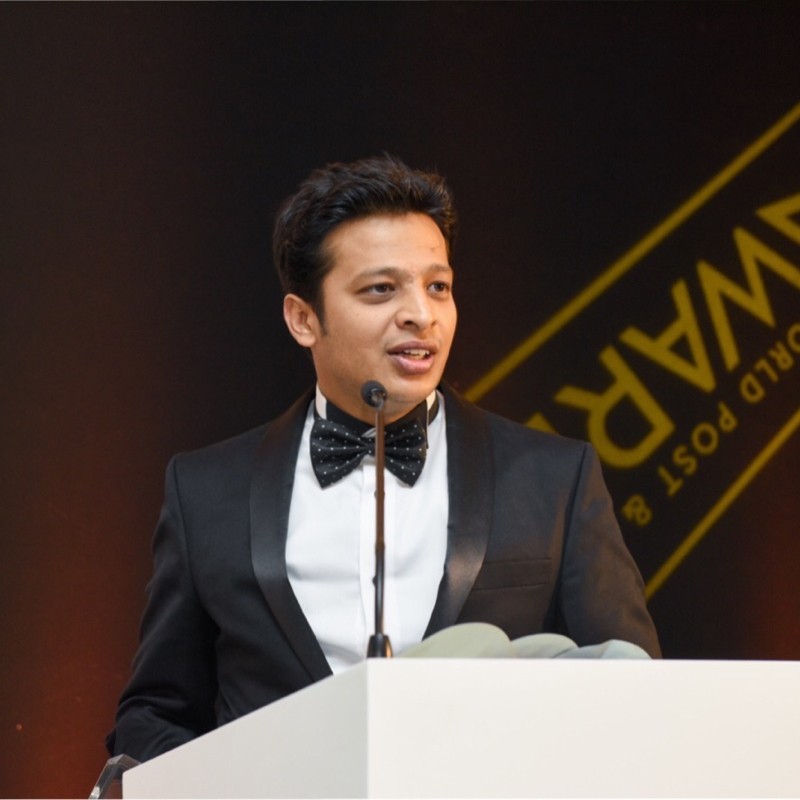 “The best way to predict the future is to create it”…
“The best way to predict the future is to create it”…
Thriving on ideas and technology to create a future where deliveries are predictable and efficient.
Responsible for FarEye’s vision, strategy and growth, together we enable more than 100 million transactions per day. Driving the culture of entrepreneurship at FarEye, I believe building a collaborative and aspiring team is as important as building a world-class product.
Problem Solver. Passion Catalyst. Change Maker. Love simulating conversations especially if done over beer.
